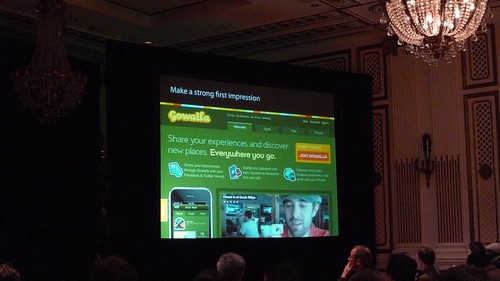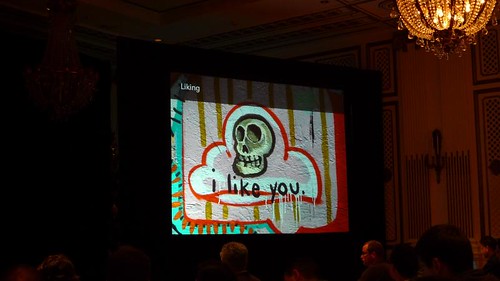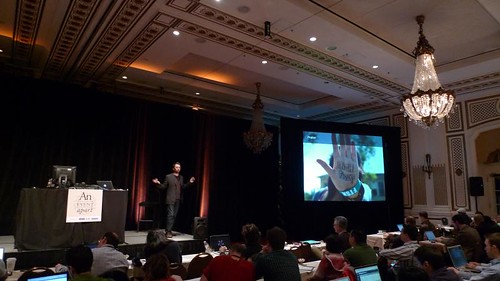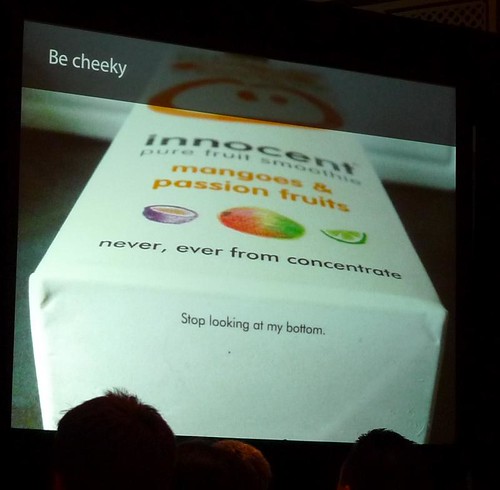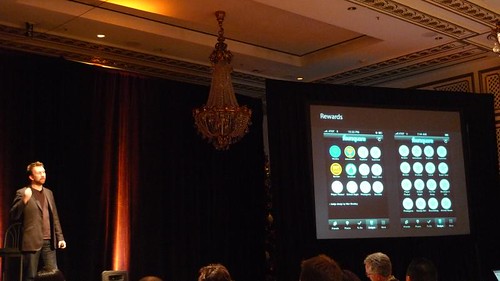Friday, 1 January 2010
Now what do we see in the future, heres my outlook
Convert an address to co ordinates
Hey amateur cartographers, geocachers and others interested in taking a human-readable address and turn it into a couple numbers that barely make any sense. Once you have those numbers, called latitude and longitude coordinates, you'll be able to plug them into a web map, GPS or other mapping device.
IMG:latlong_grid.png
The coordinates are similar to the Xs and Ys you used to plot in algebra class. Imagine if the surface of the Earth could be stretched flat. The horizontal axis is the equator, while the vertical axis is the Prime Meridian, which runs through the Greenwich Observatory in England.
Convert Using a Website
There are many websites that will take an address and convert it to a point. Google Maps, for example, has to do this whenever you type a location into its search box. It, however, does not make it easy to get the latitude and longitude of the resulting location. Instead, we'll use [GetLatLon], a simple site made for this explicit purpose.
IMG:latlong_address.png
The website asks for a "place name," such as a city, but you can type in many things. You can use a postal code, an airport code, or a full address. When you click the "Zoom to place" button, the map below will update to show the location.
Even better, the text below the map will update with the coordinates you were after.
Ditch the Address, Use a Map
You can also use [GetLatLon] to find coordinates without an address. First, enter a place name to begin, or zoom in manually (which can be tedius). As in the previous section, there are many things you can type in, so use something near your location.
Next, I like to switch the map to satellite or hybrid mode by clicking the map type. That shows some non-street features.
IMG:latlong_maptype.png
Once you've switched map types, click and drag the map around, zeroing the cross-hairs (plus sign) on the spot you want. I chose home plate of a baseball diamond, something that has no address. Yet, the text below the map updates to the correct latitude and longitude of that exact point.
Get Results in XML
Are you a little more technically inclined and want a solution that's a bit more automated? You can find the latitude and longitude of an address via a URL that will send back XML. You can view the markup in a browser, or write a program to parse it for you.
Again, there are several options, but the most prominent are solutions from Google and Yahoo. In each case, you'll need an API key, which is a special code to track your usage (the services only allow a certain number of thousands of queries per day).
Since this method is a little more complicated than the others, we'll point to Webmonkey, our web developer resource, for more detail:
In The Future
Will we still need these crazy latitude and longitude points in the future? Certainly, there will always be the need to understand how to plot the locations around us. However, already we are seeing a movement toward maps that allow you to explore the world without needing to know the underlying details.
GPS is coming on more phones and other computer-like devices now. We'll soon be able to mark places we've been and share those with others. And you'll need have to know anything about latitudes and longitudes. But aren't you glad you learned anyway?
Focus a Camera
There's more to focusing your camera than just making sure objects are sharp. In fact, focus is one of the primary ways to lead the viewer's eye through an image and getting a scene focused just right depends on the scene and your camera.
While there are no hard and fast rules to focusing, in this how to we'll take a look at some common situations and give you tips on how to make your photos draw the viewer in and give them a deeper connection to the image.
For simplicity we'll assume you're using the auto-focus features on your camera.
This article is a wiki. Cameras have changed over the years, but the laws of optics haven't. Want to focus in on this subject? Log in and edit this article.
Not all Auto Focus is created equal
Auto-focus tools vary by camera manufacturer, but generally most include several modes like area, spot and continuous. Each has it's advantages and disadvantages:
Area (sometimes called multi-area)
Chances are this is default setting and what you've been using. With Area auto focusing the camera automatically focuses using multiple focus points. Think of this as the camera taking an average of your scene and then trying to find the focal point that holds most things in focus. Although it's the default, area focus tends to be the least accurate of auto focus modes. Recommended for: landscapes, scenes where there isn't a large of depth of field.
Spot focus
In this mode your camera will focus on a spot at the center of the screen. How large of a spot depends on the camera, but most offer a visual guide that shows the spot area when you look through the viewfinder (or the screen if your camera doesn't have a viewfinder). Spot focus allows for the most control and, when combined with a half-press of the shutter button, can be used the keep foreground objects in focus and blur the background for a nice effect. Recommended for: almost anything, spot focus is really the best option in most cases.
Continuous autofocus
Generally used with moving subjects, continuous auto focus allows you to keep a primary subject in focus against a changing background. This mode can be very helpful, but is typically only found in high-end DSLRs. Still, if you have it continuous auto focus it's worth exploring. Recommended for: sporting events and other situations where your subject is moving.
Common Photo situations
Portraits
The common wisdom of portrait photography is to make sure the subject's eyes are sharply in focus. In addition to focusing on the eyes, use a large aperture (f/2.8-f/1.4) to decrease depth of field and maximize the effect of the sharply focused eyes.
Landscapes
If you want the whole scene in sharp focus, chose a very small aperture (f/16 or higher if you have it) and focus on the middle or back of the scene. If you'd like a sharp foreground with a soft background, focus on the foreground and open up the aperture a bit more to allow the background to blur.
Combinations
Sometimes called an "environmental portrait" the combination of a portrait-style subject in a larger landscape is probably the most common situation you'll find yourself capturing. The trick here is to make sure that the primary point of interest is in focus. If that's a person against a landscape use a fast shutter to make sure the person doesn't blur through motion and again, try to keep the eyes in focus. If you want a softer subject against a sharp background, do the opposite, focusing on the background and using a middle of the road aperture to let the person soften a bit.
Macros
Macros are extreme close-ups -- the center of a flower, detail of wood grain and so on. Macros generally require either a special lens or a macro focus mode. Due to the extreme depth of field in such a small area you'll want to use a small aperture and probably use a tripod since the combination of close-up and small aperture mean less light and longer shutter times.
In the future
 Auto-focus keeps improving with each new round of cameras and new modes using ever more sophisticated algorithms are always trying to do the hard work for you. Still, no amount of technology will ever be able to exactly anticipate the way you want your photos to look. It will, however, be significantly easier and faster to get the focus you want out of tomorrow's cameras.
Auto-focus keeps improving with each new round of cameras and new modes using ever more sophisticated algorithms are always trying to do the hard work for you. Still, no amount of technology will ever be able to exactly anticipate the way you want your photos to look. It will, however, be significantly easier and faster to get the focus you want out of tomorrow's cameras.
Create effective landing pages
Once someone has found you in the search engines and landed on your page, hooking them is essential. Increased traffic is one thing, but conversion is the real goal. Turning every potential lead into a verified customer is the real drive of Internet marketing. If someone is just clicking through, then your Internet marketing campaign has no follow through. Creating effective landing pages is essential to maintaining a successful web presence. Here are a few tips on how to do it.
Overview of Landing Pages
There are generally two types of landing pages. You have the “lead capture page,” which is created as a page to drive customers to after clicking on an advertisement, such as a banner ad, a link from an email marketing campaign, or a pay-per-click ad. These sorts of pages focus less on the technical components of SEO and more on conversion. The other type of “organic SEO landing page” focuses less on visitor conversion and more on the technical components of SEO to help the page rank well in search engines.
Define Goals
Before you even get into the meat of the work, you must first assess your goals for each page. Do you want someone to make a purchase, fill out a contact form, subscribe to an RSS feed, or learn more about your subject? Whatever your goal, clearly outline it so that your landing page can be designed to support that goal from the beginning. Each page has its own function and purpose. Knowing that purpose is key to designing the page so you can better encourage a successful conversion.
Research Your Customer
It’s important to understand who your customer is and what they are looking for, and then meet their needs directly. What do they need? Satisfy their wants. They are more likely to respond if you give them something in return.
Create Compelling Page Copy
Filled with billions of relevant information on any subject, the Internet is highly competitive for people’s attention. Add to that fact that people’s attention spans are as short as a goldfish, so you need to hook them from the beginning to keep them on the line. Otherwise, they’ll just go somewhere else. Keep in mind that a landing page is business. Don’t get too creative with your writing. Keep the copy clear and concise, but persuasive and interesting. Clearly state why the viewer should interact with the site, fill out a form, and purchase a product, whatever the site hopes to do.
Focus on both the opening and closing sentences. These are the two sentences people are most likely to read. If these sentences alone can be persuasive, you might just win a convert. In the opening sentence, reinforce the overall message and goal of your page, but keep it interesting. Your closing sentence should also reinforce this message, as well as explain the goal of the page in a compelling manner. Drive the reader to act now to complete the conversion. Immediacy is critical.
Design an Interesting Layout
Layout is extremely important to commanding attention. All you’ve got is a glance to entice your visitor. If your site is not visually appealing, you might want to consult help from a web design firm. Keep the layout simple, but logical and attractive. If any addition does not drive a conversion, remove it.
Stage Important Items Above the Fold
Critically important, “above the fold” is what your visitor sees on the page without scrolling down. Include the most important elements, such as a contact form or sales bar.
Persuasive Call for Action
You should have one ultimate goal with the landing page. Make sure that purpose is clearly spelled out, with easy to see buttons for visitors to respond. Make it easy on your visitor. Don’t make them search for the answer. If you don’t point them to it directly, they’ll find it somewhere else- on someone else’s landing page. Feed them what they need, as soon as they open their mouths.
With 3D bio-printer, human organs can be fabricated instead of harvested
An Australian engineering firm has developed a three-dimensional bio-printer that could be used to fabricate organs for patients who need them.
The result of a collaboration between Melbourne-based Invetech andOrganovo, a regenerative medicine company based in San Diego, California, the bio-printer is currently capable of growing blood vessels such as arteries, the companies said.
In five years, “printed” arteries could be used for open heart surgery, the companies said, with complex organs possible within 10 years.
 So how does the printer work? The machine allows scientists to place cells of almost any type into a desired three-dimensional shape. The printer has two print heads: one for placing human cells, the other for placing a hydrogel, scaffold or support matrix.
So how does the printer work? The machine allows scientists to place cells of almost any type into a desired three-dimensional shape. The printer has two print heads: one for placing human cells, the other for placing a hydrogel, scaffold or support matrix.
The printer can’t simply fabricate cells out of thin air, however. A fabricated artery requires arterial cells on hand, for example.
Gizmag quotes Organovo CEO Keith Murphy:
“Researchers can place liver cells on a preformed scaffold, support kidney cells with a co-printed scaffold, or form adjacent layers of epithelial and stromal soft tissue that grow into a mature tooth. Ultimately the idea would be for surgeons to have tissue on demand for various uses, and the best way to do that is get a number of bio-printers into the hands of researchers and give them the ability to make three dimensional tissues on demand, “ said Murphy.
The system is accurate within microns — necessary to place cells in the proper position — using a computer-controlled, laser-based calibration system for accuracy in repetition. Manipulated using a software interface, the printer can build a model of the tissue construct before the printer actually begins fabrication.
The companies plan to get the printers into the hands of research institutions who are studying human tissue repair and organ replacement.
Are fabricated organs a long way off? You bet. But the idea that you could simply “Ctrl + P” to print a pancreas is exciting, indeed.
How To Use Fortune3 Software To Build a Website
Fortune3 is an award winning e-commerce shopping cart software to build an e-commerce website for you to upload and sell your products online.
Fortune3 is free to download for 30 days and then you choose a package you would like to sign up for depending on the number of products you want to sell.
1- Download the software.
2- Install the software on your computer by going to:http://www.fortune3.com/en/wizard/links/downloads/download_shopping_cart_software.shtml
3- Click Save.
4- Make sure you remember where you save the file so once downloaded, you can open it.
5- Once opened, download the software and it should install in your system.
6- A step by step resource on how to manually upload your products and screen shots is located here:http://www.fortune3.com/en/wizardhelp/contents.shtml
Since any category can be placed inside another category (in different layers or sub-categories), you will be able to build your online store by placing each product in the right location and maximize your shopping cart's usability and sales. You can categorize your online store by index (like a printed catalog), location (similarly to the isles and shelves of a department store), type, brand, size, color, etc.; or by combining them as needed in your E-Commerce website.
By right clicking on any of the icons on the product tree, a menu will open offering you various options. You can also move any icon from one place to another or use the Cut, Copy and Paste options, as well as the Drag and Drop feature with your mouse. There are also buttons on the bottom of the tree called "Move Up" "Move Down" "Move to Top" and "Move to Bottom" that will organize your items in order.
How to seduce your users with web design
We all like being seduced. Interaction on the web can take advantage of this idea.
There is a notion of “seductive interfaces”. It’s about surprise and delight. We are all seducers. We are doing it out of instinct.
This doesn’t have to do with deviation, mind control, and trickery. It’s not about the one-night stand; it’s about forming a long-term relationship with the user.
Step 1: The approach. First impressions really matter. 43% of women will make up their mind about a partner in the first 30 seconds. It takes men over a half an hour sometimes. This is the basis of speed-dating. Research has been shown that we make immediate reactions on just about everything, and we do it really quick.
Unwrapping a new iPod is like undressing your girlfriend for the first time.
Apple is the master of this. When you get a new iPod, you open up the packaging really slowly. Everything looks really nice. The packaging is perfect; so crisp. It makes you fall in love with the product before even using it.
If someone tells you not to judge a book by it’s cover, you’re gonna judge the book a lot harder on it’s cover. We have a high value on looks.
If you’re trying to seduce people, mystery works. That sense of allure brings you into the storyline and makes you want to know more all the time. The more mysterious you are, the more people want to learn about you. But don’t be that guy. You know, that guy.

And don’t be needy. Pickup lines don’t work.
The aesthetic usability effect makes you think that everything that looks better makes you believe it’s gonna be an awesome experience. Gowalla rocks this idea.
Your site should be easy to get along with.
Ultimately, in that first approach, you need to finish your first date with a really good impression. Think about Moo.com, the business/fun card-maker. You can use all of their tools to build the most incredible personal products. When you finish using the product, you realize you’ve lost track of time. It justifies paying $20 for 100 little pieces of paper. The experience outweighs the cost.
Step 2 is the rapport. You need to build up the relationship. Good seduction professionals will elongate that process of building rapport. Tease the situation.
Be friendly and attentive. Have good manners. This is a staple of good usability.
You are much more likely to meet someone that has similar interests. Highlight the similarities by finding those shared interests and values.
You can’t immediately seduce the person, so go after their friends. If their friends like you, the better chance you have. How does this apply to the web?
A lot of this comes down to “liking”. You have to like the ethos of the website before you engage with it.
The success of Etsy revolves around the fact that people who have similar interests can connect with each other and exchange ideas in a marketplace. Last.fm is successful because it bubbles up similarities; it can find other users with similar musical tastes.
We are not making all decisions by ourselves. What other people are doing matter.
Testimonials are very important. Your homepage should have a bunch of commentary from others saying you kick ass.

The reason you laugh on a date at a movie is not to express internal humor… you want the other person to know it’s okay to let yourself loose.
Surprise and delight can be powerful tools.
Most of seduction comes from particular language to generate an almost physical response. Get people talking about food; because the same part of the brain that is used to think about food is also used to think about sex. Get people excited.
Play hard to get. Don’t show everything up front. It’s about sparking the imagination and filing in the gaps of the user’s minds. It’s based on loss-aversion theory. If you’ve had something and it’s taken away from you, you want it again.
The iPhone is a great seducer; every interface on it is sexy.
Everyone wants a “carousel” nowadays. They really engage the users; you can flirt with the page almost. Animations, rollovers; even though they are subtle, they still better than boring text.
Have a personality with your design. Be open to playfulness. Incorporate them into your 404 page. Put “fun” in functionality. Instead of doing a captcha, do something more fun like a tic-tac-toe game.
The idea of poking in Facebook has a vaguely sexual connotation. That element of mystery still gets us today, what does it mean? Seductive language is very powerful.
Instead of saying “buy it now”, say “I want it” or “gimme”.
Limit supply; tease your users. Spotify is the king of this.
There is a right time and a wrong time to seduce a user. You have to be a bit subtle. Let them play around; trust them.
Find a legitimate reason to get in touch with people. Don’t be all stalky, but be around your users more. Join every possible social network because your users are hanging out there.
People form relationships when the benefit outweighs the cost. If people are giving you praise, and making you feel good, you are much more likely to spend time with them.
If you have a really painful signup process, you aren’t gonna stick around. Websites today are like abusive relationships. Well, mainly just MySpace.
Reward your users. Foursquare has psychologically empowered their users to create valuable content on their website.
Build something that makes people learn and get better over time. As you start using a service, you should become an expert at it.



